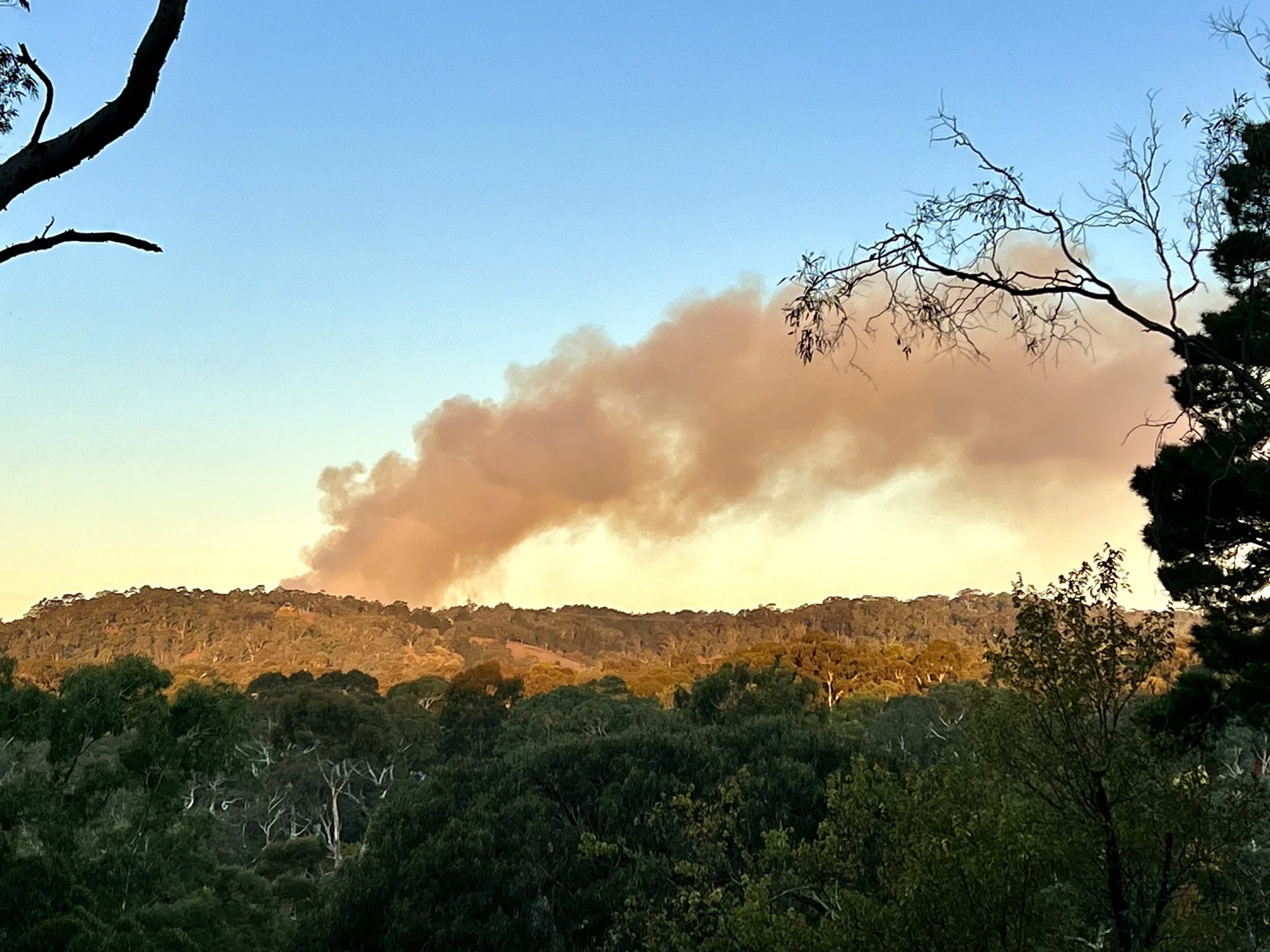Cool burns
By Jake Robinson
In recent years, wildfires have become increasingly prevalent and devastating, ravaging forests, endangering wildlife, and threatening human lives and livelihoods. I write this blog post while intermittently staring at a backdrop of thick smoke rising on the horizon - a modern ‘controlled burn’ in Belair National Park (see below - a view from my garden). Research shows that thick smoke such as this comprises an abundance of particulate matter with a diameter of less than 2.5 microns (PM2.5), which is widely known to cause severe respiratory conditions. So, it’s not ideal if you’re an animal in the area or live downwind! And that’s just the smoke - think of the heat and flames accompanying it.
In the face of these challenges, there's a growing interest in traditional land management practices, particularly Aboriginal ‘cool burn’ techniques. This ancient practice, honed over millennia by Indigenous Australians (although similar practices occur in other cultures around the world), is a sustainable land stewardship and wildfire prevention technique with important cultural value. Cool burns, also known as ‘cultural burns’, are intentional fires ignited during cooler months with carefully planned conditions. Unlike destructive wildfires, cool burns are low-intensity fires deliberately set to clear the undergrowth, reduce fuel loads, and promote ecological health. These burns are conducted with meticulous attention to weather conditions, fuel moisture levels, and ecological considerations, ensuring minimal damage to mature trees and wildlife habitats. For Indigenous Australians, cool burns are also deeply embedded in cultural and spiritual practices, serving as a means of land management and connection to Country. These burns are conducted in accordance with traditional ecological knowledge, passed down through generations, emphasising the interconnectedness of land, people, and wildlife. By nurturing the land through cool burns, Indigenous communities maintain biodiversity, regenerate native flora, and protect cultural heritage sites.
The environmental benefits of cool burns are likely manifold. By reducing fuel loads and preventing the buildup of highly flammable vegetation, cool burns mitigate the risk of catastrophic wildfires. Moreover, cool burns rejuvenate ecosystems, promote the growth of native plants, enhance soil fertility, and indirectly provide habitat for diverse wildlife species. In addition to their ecological impact, cool burns likely contribute to carbon sequestration and climate change mitigation - although this still needs to be researched as we’re living in a different world with different conditions to bygone times.
The success of cool burns lies in community engagement and collaborative partnerships between Indigenous custodians, land managers, and government agencies. Recognising this, an Indigenous organisation called Firesticks Aliiance is leading efforts in my local area to restore and protect landscapes while fostering greater resilience to wildfires.
I went along to a cultural burn held in the Adelaide Parklands today. It was so ‘cool’ that the person who lit the fire walked bare-footed amongst the burning grass (see below). Moreover, I was surprised to see invertebrates such as ants and beetles scurrying through the area seemingly unharmed; In fact, some were heading into the scorched area - showing how ‘cool’ the ground was after the flames had run across it. The fire also burns slowly so animals have a chance to move away from it - unlike uncontrollable wildfires which burn through everything in their path.
Cool burning blog by Jake Robinson, scientist and author of The Nature of Pandemics, Invisible Friends and Treewilding. microbiome; holobiont
Despite their efficacy, the widespread adoption of cool burns faces challenges, including regulatory barriers, limited resources, and cultural misconceptions. Addressing these challenges requires meaningful engagement with Indigenous communities, policy reforms that support traditional land management practices, and increased investment in Indigenous fire management infrastructure and training. By harnessing the wisdom of Aboriginal cool burns, we can reimagine fire management strategies that prioritise ecological sustainability, cultural preservation, and community resilience.
Visit Firesticks Alliance for more information.

